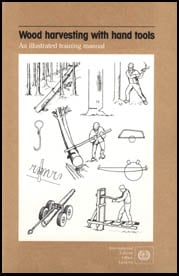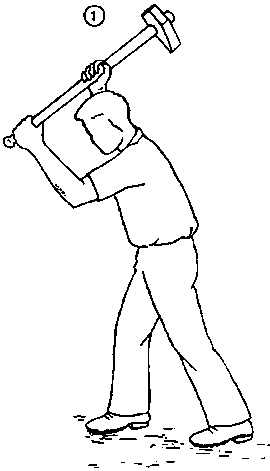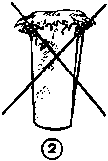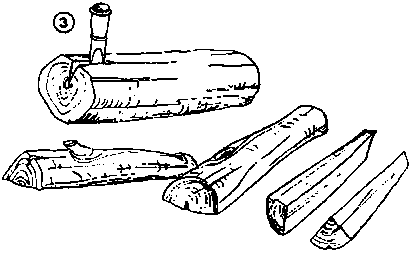
Wood Splitting[edit | edit source]
To make handling and transport of short pieces of wood easier and to reduce the time required for seasoning, wood of a diameter exceeding 20 cm is often split after cross-cutting. In the absence of splitting tools, bigger wood pieces of fuelwood quality often remain unutilised.
It may also be necessary to split wood to be used as fence posts.
Splitting requires good quality splitting hammers and wedges. The hammer should weigh about 2.5 kg and have a straight handle, about 90 cm long, with a knob (1). Steel wedges with a mushroom head should not be used (2). The safest wedge is a steel socket wedge with a wooden head and a steel ring (3).
Since the way wood splits differs a lot depending on the tree species, splitting techniques must be modified accordingly. For wood which splits easily, a few blows with the cutting side of the splitting hammer on the end of the billet will suffice. For wood which is more difficult to split, a wedge is inserted near the end of the billet and further wedges may be needed as the crack opens (3).
Figure
Figure
Figure


